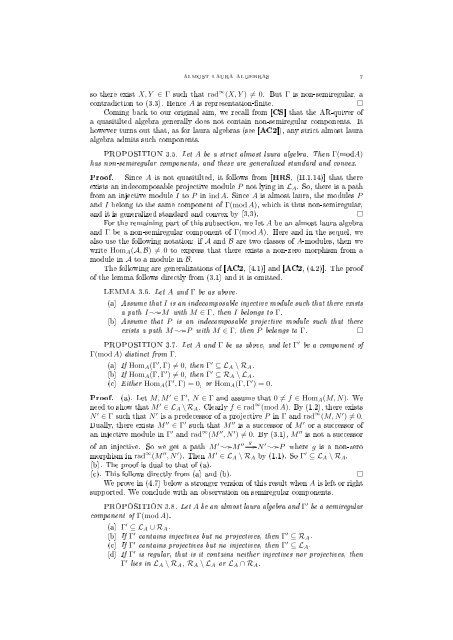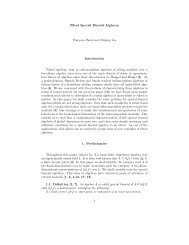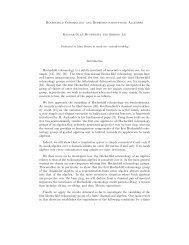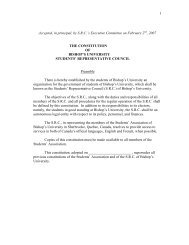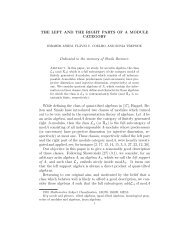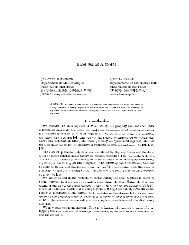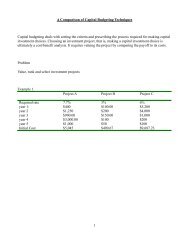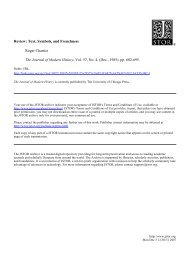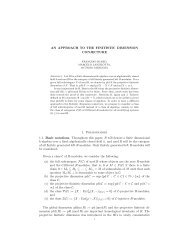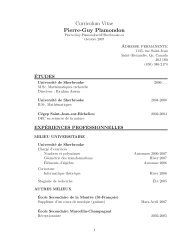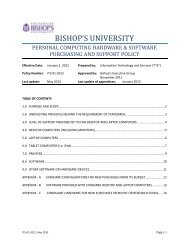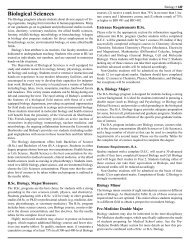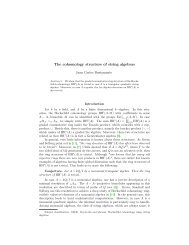Almost laura algebras
Almost laura algebras
Almost laura algebras
You also want an ePaper? Increase the reach of your titles
YUMPU automatically turns print PDFs into web optimized ePapers that Google loves.
ALMOST LAURA ALGEBRAS 7<br />
so there exist X, Y ∈ Γ such that rad ∞ (X, Y ) ≠ 0. But Γ is non-semiregular, a<br />
contradiction to (3.3). Hence A is representation-nite.<br />
□<br />
Coming back to our original aim, we recall from [CS] that the AR-quiver of<br />
a quasitilted algebra generally does not contain non-semiregular components. It<br />
however turns out that, as for <strong>laura</strong> <strong>algebras</strong> (see [AC2]), any strict almost <strong>laura</strong><br />
algebra admits such components.<br />
PROPOSITION 3.5. Let A be a strict almost <strong>laura</strong> algebra. Then Γ(modA)<br />
has non-semiregular components, and these are generalized standard and convex.<br />
Proof. Since A is not quasitilted, it follows from [HRS, (II.1.14)] that there<br />
exists an indecomposable projective module P not lying in L A . So, there is a path<br />
from an injective module I to P in ind A. Since A is almost <strong>laura</strong>, the modules P<br />
and I belong to the same component of Γ(mod A), which is thus non-semiregular,<br />
and it is generalized standard and convex by (3.3).<br />
□<br />
For the remaining part of this subsection, we let A be an almost <strong>laura</strong> algebra<br />
and Γ be a non-semiregular component of Γ(mod A). Here and in the sequel, we<br />
also use the following notation: if A and B are two classes of A-modules, then we<br />
write Hom A (A, B) ≠ 0 to express that there exists a non-zero morphism from a<br />
module in A to a module in B.<br />
The following are generalizations of [AC2, (4.1)] and [AC2, (4.2)]. The proof<br />
of the lemma follows directly from (3.1) and it is omitted.<br />
LEMMA 3.6. Let A and Γ be as above.<br />
(a) Assume that I is an indecomposable injective module such that there exists<br />
a path I M with M ∈ Γ, then I belongs to Γ.<br />
(b) Assume that P is an indecomposable projective module such that there<br />
exists a path M P with M ∈ Γ, then P belongs to Γ. □<br />
PROPOSITION 3.7. Let A and Γ be as above, and let Γ ′ be a component of<br />
Γ(mod A) distinct from Γ.<br />
(a) If Hom A (Γ ′ , Γ) ≠ 0, then Γ ′ ⊆ L A \ R A .<br />
(b) If Hom A (Γ, Γ ′ ) ≠ 0, then Γ ′ ⊆ R A \ L A .<br />
(c) Either Hom A (Γ ′ , Γ) = 0, or Hom A (Γ, Γ ′ ) = 0.<br />
Proof. (a). Let M, M ′ ∈ Γ ′ , N ∈ Γ and assume that 0 ≠ f ∈ Hom A (M, N). We<br />
need to show that M ′ ∈ L A \ R A . Clearly f ∈ rad ∞ (mod A). By (1.2), there exists<br />
N ′ ∈ Γ such that N ′ is a predecessor of a projective P in Γ and rad ∞ (M, N ′ ) ≠ 0.<br />
Dually, there exists M ′′ ∈ Γ ′ such that M ′′ is a successor of M ′ or a successor of<br />
an injective module in Γ ′ and rad ∞ (M ′′ , N ′ ) ≠ 0. By (3.1), M ′′ is not a successor<br />
of an injective. So we get a path M ′ M ′′ g N ′ P where g is a non-zero<br />
morphism in rad ∞ (M ′′ , N ′ ). Then M ′ ∈ L A \ R A by (1.1). So Γ ′ ⊆ L A \ R A .<br />
(b). The proof is dual to that of (a).<br />
(c). This follows directly from (a) and (b).<br />
□<br />
We prove in (4.7) below a stronger version of this result when A is left or right<br />
supported. We conclude with an observation on semiregular components.<br />
PROPOSITION 3.8. Let A be an almost <strong>laura</strong> algebra and Γ ′ be a semiregular<br />
component of Γ(mod A).<br />
(a) Γ ′ ⊆ L A ∪ R A .<br />
(b) If Γ ′ contains injectives but no projectives, then Γ ′ ⊆ R A .<br />
(c) If Γ ′ contains projectives but no injectives, then Γ ′ ⊆ L A .<br />
(d) If Γ ′ is regular, that is it contains neither injectives nor projectives, then<br />
Γ ′ lies in L A \ R A , R A \ L A or L A ∩ R A .


